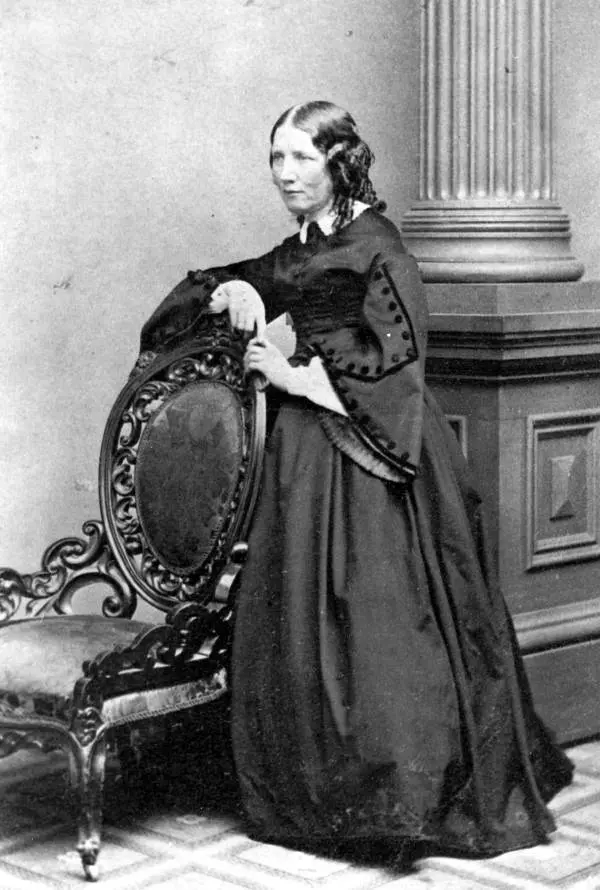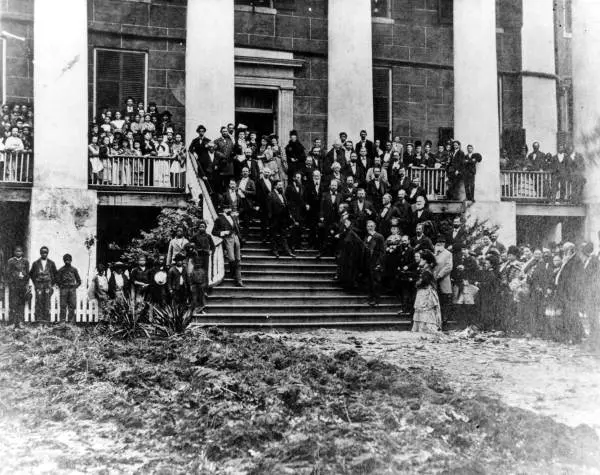With the publication of her novel “Uncle Tom’s Cabin” in 1852, Harriet Beecher Stowe became the most famous writer in America. That book helped to fuel the raging debate over slavery in the United States.
When Stowe met President Abraham Lincoln in 1862, he reportedly said, “So you are the little lady who started this Great War.”
Often overlooked is the fact that Harriet Beecher Stowe is also one of the first and greatest proponents of Florida as a popular tourist destination.
Stowe began spending her winters in Mandarin, Florida, shortly after the Civil War ended. Her home was on the St. Johns River where she could sit on her porch and enjoy the natural environment. Stowe also traveled to places such as Silver Springs, St. Augustine, and Tallahassee, and wrote about her experiences.
In 1873, some of Stowe’s descriptive and colorful “tourist articles” were published in the book “Palmetto Leaves.” More recently, a collection of Stowe’s fascinating vignettes of Florida life not included in “Palmetto Leaves” has been published as the book “Calling Yankees to Florida: Harriet Beecher Stowe’s Forgotten Tourist Articles.”
“She was writing about what life was like here in frontier Florida, and she would publish those into periodicals up North,” says Sandy Arpen, president of the Mandarin Museum and Historical Society.
“She especially loved the nature here. She talked about the smell of the orange groves and of the orange blossoms, and of the moss hanging from the trees, and the beauty of the roses, and the live oaks, and all of the things that were so beautiful here. Many people became interested in touring here and coming to see what she was writing about because she was very well read in the North.”
Stowe became actively involved in Florida’s new tourism industry of the late 1800s. The steamship companies that brought tourists down the river paid the famous writer to stand on her porch and wave to their passengers.
Stowe’s book “Palmetto Leaves” consists of a series of articles written in the year 1872. She wrote many articles both before and after that year, and a selection of those articles has been assembled in the book “Calling Yankees to Florida,” edited by John T. Foster Jr. and Sarah Whitmer Foster.
The Foster’s believe that Stowe had a hidden agenda in writing about the natural wonders of Florida for northerners suffering through snowy winters. In addition to stimulating tourism, the Foster’s think that Stowe was trying to attract a more progressive voting block to Florida to lead the state from the Old South into a new era.
Following the Civil War, there were almost as many African Americans living in Florida as there were Caucasians.
“Florida is about half black and half white, and it wouldn’t take many newcomers to Florida to become a place different from what it had been in the past,” says John T. Foster Jr.
“The white population of Florida at the time was divided into different groups in terms of social origin,” says Foster. “The oldest group in Florida would have been the Menorcans, associated with the seafood industry and primarily St. Augustine. A different group would have been ‘cracker’ Florida. These are frontier and country people drifting in from Georgia primarily. This, of course, would be a main theme of Marjorie Kinnan Rawlings’ famous novels. Lastly, there would be ‘planter’ Florida in the region east and west of Tallahassee. These were people replicating the Old South in terms of slavery.”
Foster says that Stowe and her forward thinking associates in Florida realized that if a new population of northern whites would move to the state, progressive attitudes could prevail here.
Stowe’s friends in Florida included Governor Harrison Reed and his wife Chloe Merrick Reed. The governor modernized Florida’s education system and appointed Stowe’s brother Charles Beecher as State Superintendent of Education. Both Mrs. Reed and another friend of Stowe’s, John Swain, were active abolitionists in Florida.
Rather than aggressively promoting her political views, Stowe chose a more subtle approach to modernizing Florida. She helped to stimulate a growing tourism industry, and attracted progressive voters to the state by extolling the virtues of life in the sunshine surrounded by natural beauty.

